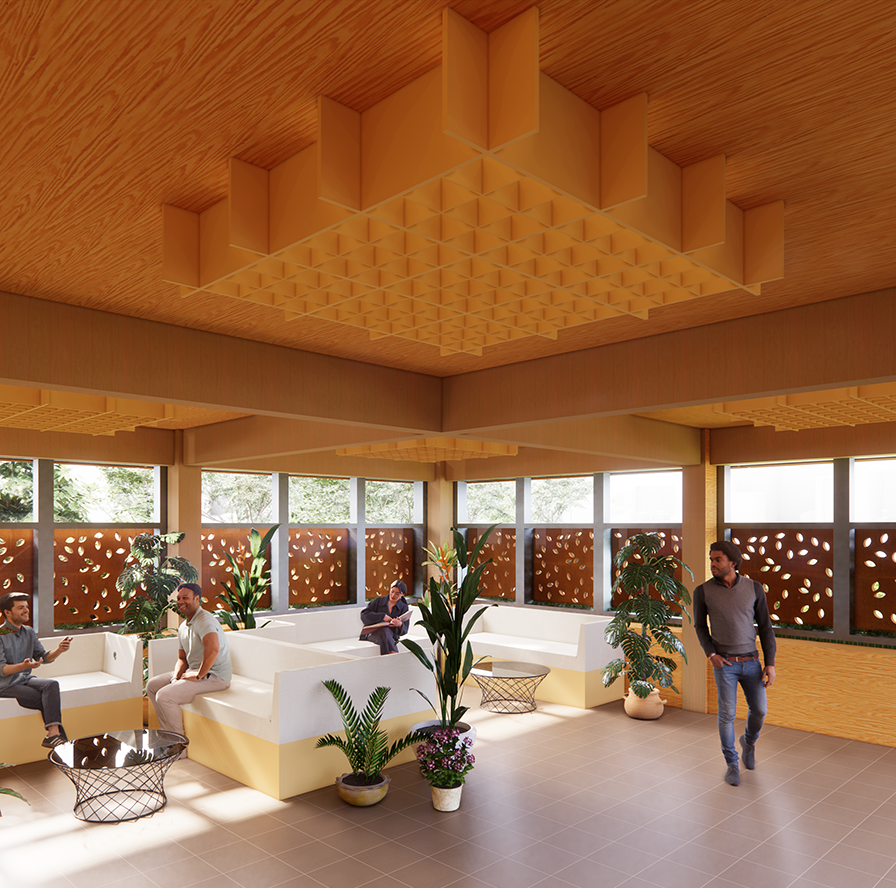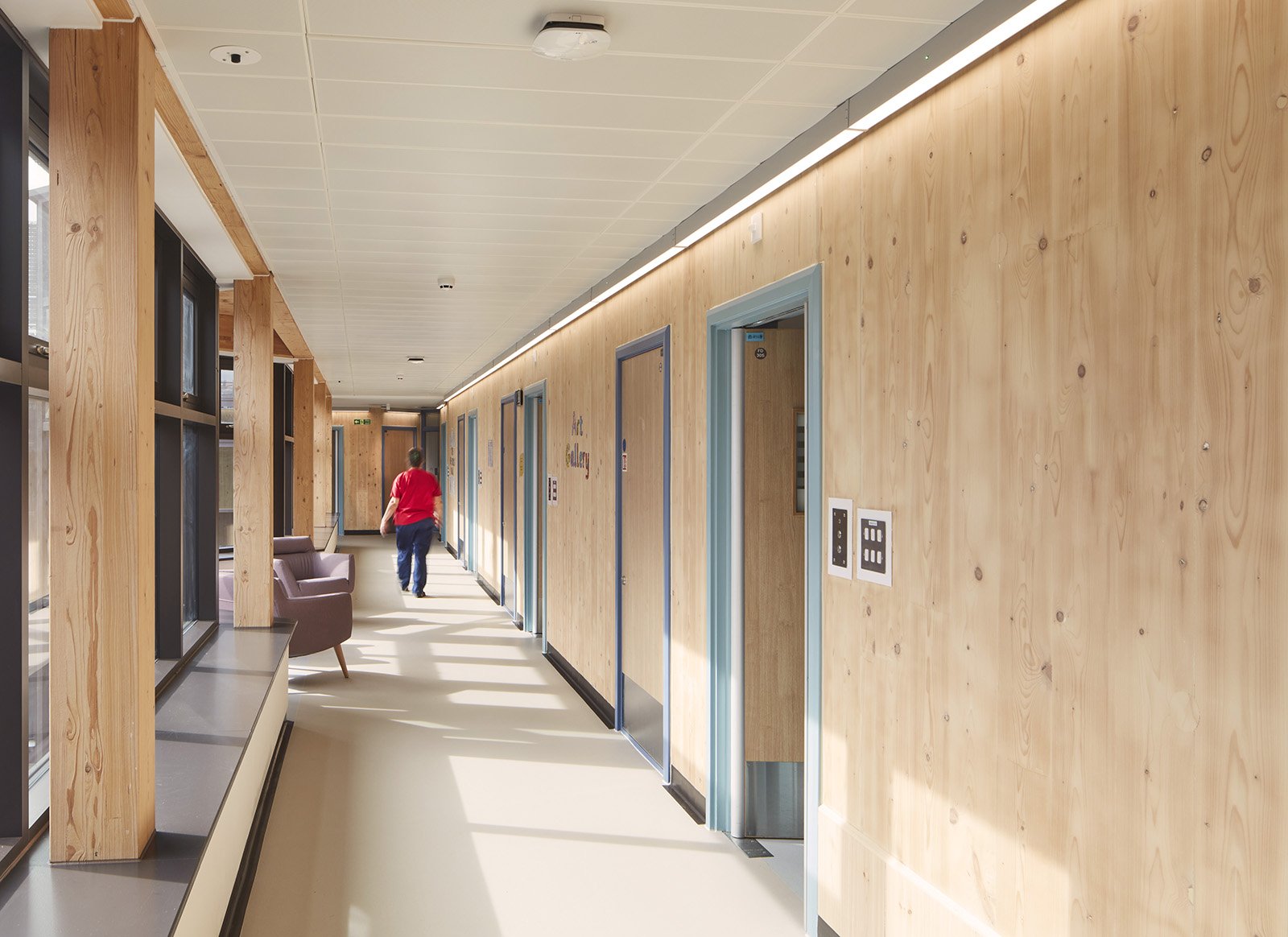How replacing concrete with timber can save costs, reduce carbon and make for better buildings
Lessons from Maggie’s Newcastle…
Cullinan Studio’s decision to switch a concrete frame for timber revitalised a stalled design project and brought numerous cost, time and environmental benefits. We believe that imaginative uses of timber can and should be applied to architectural projects across all sectors…
Maggie’s Newcastle is a special building. Conceived by Cullinan Studio in 2008 and opened five years later, the drop-in centre for people with cancer feels warm, safe and uplifting. It is designed so that wherever users are in the building they feel connected to nature, with plenty of natural daylight and views onto the flowers and trees of the wild garden created around it and the courtyard within it.
An unprecedented six thousand people visited Maggie’s Newcastle within five months of its opening, and the centre proved so popular that staff soon found they needed more space and additional consultation rooms. In 2018 Maggie’s asked us to design an extension following the same palette and rhythm as the existing building, to cater for the demand.
This should have been a relatively simple task, following the pattern book of the original design. But a decade on, costs for concrete and other materials had soared and the original plan had become prohibitively expensive. The project was in real danger of being stalled indefinitely.
Turning to timber
The solution we hit upon was to retain the original design’s setting out and grid, but to replace its concrete frame with a mass timber frame.
The new annexe adds three new meeting rooms and extends the kitchen space, while adding a second, peaceful garden area and completing the third side of the much-used outside courtyard. It is very much in keeping with the existing building, carrying through its key datum levels, corten metal cladding and extensive glazing, and retaining the existing landscape levels.
In our new plan we were able to find ways to repurpose and reuse materials from the site for the extension. The original roof escape will become a new staircase into the courtyard; sliding doors will be reused in a new location; and cladding from what was the outside of the building will be repurposed on the new interior walls.
But the critical innovation was the use of timber. Concrete is still used in the new annexe, but sparingly and only where structurally necessary; it is timber that does all of the work above ground level. This made the entire project financially viable, and brought many other benefits.
The lesson – which can be applied to architectural projects across all sectors – is that timber frames have clear advantages over concrete in three areas:
1) Timber is better for client budgets
There is a persistent myth that timber generally – and CLT in particular – is more expensive than concrete for building projects. But even without factoring in the recent increase in concrete costs, timber offers wider savings that can more than outweigh the simple cost of the materials.
At Maggie’s Newcastle, the lighter structural weight of the timber frame meant that we could reduce the foundations and need for spoil removal, making significant cost savings. CLT is fabricated off-site in quality-controlled and safe conditions, ready for construction, so timber also allows for shorter, cheaper building time frames than concrete – the timber superstructure is planned to be completed in less than two weeks.
Another myth is that timber is difficult to work with – but in fact at Maggie’s there proved to be unexpected advantages: unlike with concrete, the timber parapet along the top of the annexe can easily be adapted with hand tools on site following any variation in the existing building.
2) Timber is better for the environment: and for hitting embodied carbon targets
The reality is that switching from concrete and steel to timber wherever possible is going to become an urgent necessity if net zero carbon targets are to be met by the construction industry.
Timber sequesters carbon (e.g. a wooden beam stores the carbon dioxide consumed by the tree as it grew for the entire lifetime of the beam – potentially in multiple buildings if it is reused; and the tree’s replacement in a sustainable forest will consume yet more CO2.)
There’s a cost-saving benefit as well as an environmental one: switching to a timber frame means that projects will not have to rely on other, more expensive carbon-reducing methods to hit net zero targets.
3) Timber is better for the wellbeing of a building’s users
As a place of care and support for cancer patients, the design of Maggie’s Newcastle places a particular emphasis on mental and physical wellbeing by connecting its users to nature both inside and outside the building. The new frame of the annexe further enhances this connection, with exposed timber columns, beams and partitions creating a naturally warm and simple palette of natural materials.
The principle applies almost universally. People enjoy living and working in timber buildings. The wood creates a warm, tactile effect that can be appreciated with multiple senses: sight, smell and touch. Studies have found that being surrounded by wooden surfaces reduces stress and that timber workplaces are more productive. Timber makes for better, calmer, happier buildings.
At Cullinan Studio we have always preferred to use natural materials where we can, and timber features prominently in some of our most successful projects.
Now that the new design for Maggie’s Newcastle annexe has received planning approval and is due to start on site imminently, the benefits of timber over concrete have become clearer than ever, with huge potential benefits for clients.
For more information and to discuss timber or any of the issues raised in this post, contact Alex Abbey or Lucy Brittain.
The recently completed Catkin Centre and Sunflower House at Alder Hey Children’s Hospital are made of timber - a material not normally associated with hospitals, but here revealed and expressed throughout to create a warm, tactile effect that can be appreciated with multiple senses and promote healing.







